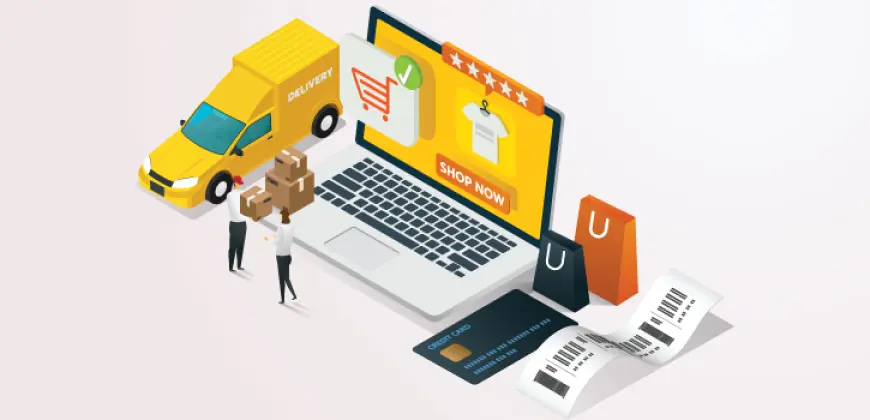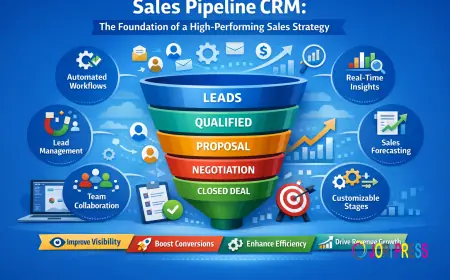Top Features to Look for in Wholesale Distribution Software
Wholesale distributors operate in a dynamic and highly competitive environment, where efficiency

Wholesale distributors operate in a dynamic and highly competitive environment, where efficiency, accuracy, and responsiveness are key to success. Managing inventory across multiple warehouses, fulfilling high-volume orders, and ensuring customer satisfaction require more than spreadsheets or disconnected tools. That’s where wholesale distribution software comes in. The right software can revolutionize your operations, but not all solutions offer the same value. In this article, we’ll explore the top features to look for in wholesale distribution software to ensure you make a smart investment for your business.
1. Real-Time Inventory Management
One of the most essential features is real-time inventory tracking across all locations. Your software should:
-
Provide up-to-the-minute stock levels
-
Track inventory by SKU, location, and batch
-
Support FIFO, LIFO, and serial number tracking
This ensures you can meet customer demand without overstocking or risking costly stockouts.
2. Multi-Warehouse and Multi-Location Support
Wholesale businesses often operate across several warehouses or distribution centers. Look for software that allows you to:
-
Manage inventory across multiple locations
-
Transfer stock between warehouses with ease
-
Assign orders to the optimal fulfillment center based on location and availability
This feature improves logistics efficiency and reduces delivery times.
3. Order Management and Fulfillment Automation
Manual order processing is prone to delays and errors. The software should streamline your order-to-delivery process by offering:
-
Automated order capture from multiple channels (phone, email, eCommerce)
-
Customizable workflows for different order types
-
Real-time order tracking and status updates
Faster, more accurate fulfillment leads to higher customer satisfaction and lower return rates.
4. Integrated Customer Relationship Management (CRM)
Your software should help you manage customer interactions and improve service. A built-in CRM module can provide:
-
Access to customer purchase history and preferences
-
Automated reminders for follow-ups or reorders
-
Custom pricing, discounts, and credit terms for specific clients
Strong customer relationships are vital in wholesale—and a smart CRM helps maintain them.
5. Advanced Reporting and Business Intelligence
To stay competitive, you need to make data-driven decisions. Choose software with:
-
Real-time dashboards and KPI monitoring
-
Customizable reports for sales, inventory, and performance
-
Forecasting tools for demand planning and budgeting
This insight helps you identify trends, manage cash flow, and optimize your supply chain.
6. Flexible Pricing and Discount Rules
Wholesale businesses often deal with complex pricing models. Your software should support:
-
Tiered pricing based on customer type or order volume
-
Time-based promotions and loyalty discounts
-
Automatic application of pricing rules during order creation
This flexibility ensures consistent pricing and simplifies billing.
7. Accounting and Financial Integration
To keep your back office running smoothly, the software should integrate with popular accounting systems like QuickBooks, Xero, or NetSuite. Look for features such as:
-
Automatic invoice generation and payment recording
-
Tax calculation and compliance support
-
Real-time syncing of sales and financial data
This reduces manual entry and ensures accurate, audit-ready records.
8. Mobile and Cloud Access
Modern wholesale operations need to be flexible and responsive. A cloud-based, mobile-accessible system allows your team to:
-
Check stock, create orders, and manage customers remotely
-
Access real-time data from any device
-
Scale operations without investing in expensive hardware
This is especially valuable for on-the-go sales reps and remote teams.
9. eCommerce and Marketplace Integration
If your wholesale business also sells online or via marketplaces, choose software that integrates with:
-
Platforms like Shopify, WooCommerce, Amazon, and eBay
-
EDI systems for B2B order automation
-
APIs for seamless third-party connections
This ensures all sales channels are unified, preventing inventory errors and fulfillment delays.
10. Robust Security and User Controls
With sensitive business data and financial information in the system, security is non-negotiable. Your software should offer:
-
Role-based access controls
-
Data encryption and secure backups
-
Audit logs for tracking changes and user activity
Strong security safeguards your operations and builds trust with partners and customers.
Conclusion
Wholesale distribution software is more than a digital upgrade—it’s a strategic asset that helps you compete, grow, and thrive in a fast-changing market. By prioritizing features like real-time inventory tracking, multi-location support, order automation, CRM integration, and data analytics, you position your business for long-term success.
What's Your Reaction?
 Like
0
Like
0
 Dislike
0
Dislike
0
 Love
0
Love
0
 Funny
0
Funny
0
 Angry
0
Angry
0
 Sad
0
Sad
0
 Wow
0
Wow
0



















































